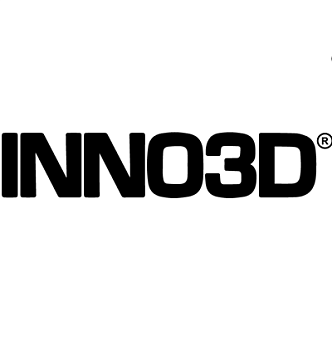 Galax GeForce RTX 3070 SG 1-Click OC
Galax GeForce RTX 3070 SG 1-Click OC
 Inno3D GeForce GTX Titan
Inno3D GeForce GTX Titan
Comparision Galax GeForce RTX 3070 SG 1-Click OC vs Inno3D GeForce GTX Titan
Grade
Top specs and features
- Passmark score
- 3DMark Cloud Gate GPU benchmark score
- 3DMark Fire Strike Score
- 3DMark Fire Strike Graphics test score
- 3DMark 11 Performance GPU benchmark score
Passmark score
3DMark Cloud Gate GPU benchmark score
3DMark Fire Strike Score
3DMark Fire Strike Graphics test score
3DMark 11 Performance GPU benchmark score
Description
The Galax GeForce RTX 3070 SG 1-Click OC video card is based on the Ampere architecture. Inno3D GeForce GTX Titan on the Kepler architecture. The first has 17400 million transistors. The second is 7080 million. Galax GeForce RTX 3070 SG 1-Click OC has a transistor size of 8 nm versus 28.
The base clock speed of the first video card is 1500 MHz versus 836 MHz for the second.
Let's move on to memory. Galax GeForce RTX 3070 SG 1-Click OC has 8 GB. Inno3D GeForce GTX Titan has 8 GB installed. The bandwidth of the first video card is 448 Gb/s versus 288 Gb/s of the second.
FLOPS of Galax GeForce RTX 3070 SG 1-Click OC is 19.64. At Inno3D GeForce GTX Titan 4.41.
Goes to tests in benchmarks. In the Passmark benchmark, Galax GeForce RTX 3070 SG 1-Click OC scored 21985 points. And here is the second card 8098 points. In 3DMark, the first model scored 30723 points. Second 10004 points.
In terms of interfaces. The first video card is connected using PCIe 4.0 x16. The second is PCIe 3.0 x16. Video card Galax GeForce RTX 3070 SG 1-Click OC has Directx version 12. Video card Inno3D GeForce GTX Titan -- Directx version - 11.
Regarding cooling, Galax GeForce RTX 3070 SG 1-Click OC has 220W heat dissipation requirements versus 250W for Inno3D GeForce GTX Titan.
Why Galax GeForce RTX 3070 SG 1-Click OC is better than Inno3D GeForce GTX Titan
- Passmark score 21985 против 8098 , more on 171%
- 3DMark Fire Strike Graphics test score 30723 против 10004 , more on 207%
- GPU base clock speed 1500 MHz против 836 MHz, more on 79%
- RAM 8 GB против 6 GB, more on 33%
- Memory bandwidth 448 GB/s против 288 GB/s, more on 56%
- Gpu memory speed 1750 MHz против 1502 MHz, more on 17%
- FLOPS 19.64 TFLOPS против 4.41 TFLOPS, more on 345%
- Turbo gpu 1725 MHz против 876 MHz, more on 97%
Galax GeForce RTX 3070 SG 1-Click OC vs Inno3D GeForce GTX Titan: highlights


Performance
Memory
General information
Functions
Benchmark tests
Ports
FAQ
How does the Galax GeForce RTX 3070 SG 1-Click OC processor perform in benchmarks?
Passmark Galax GeForce RTX 3070 SG 1-Click OC scored 21985 points. The second video card scored 8098 points in Passmark.
What FLOPS do video cards have?
FLOPS Galax GeForce RTX 3070 SG 1-Click OC is 19.64 TFLOPS. But the second video card has FLOPS equal to 4.41 TFLOPS.
What power consumption?
Galax GeForce RTX 3070 SG 1-Click OC 220 Watt. Inno3D GeForce GTX Titan 250 Watt.
How fast are Galax GeForce RTX 3070 SG 1-Click OC and Inno3D GeForce GTX Titan?
Galax GeForce RTX 3070 SG 1-Click OC operates at 1500 MHz. In this case, the maximum frequency reaches 1725 MHz. The clock base frequency of Inno3D GeForce GTX Titan reaches 836 MHz. In turbo mode it reaches 876 MHz.
What kind of memory do graphics cards have?
Galax GeForce RTX 3070 SG 1-Click OC supports GDDR6. Installed 8 GB of RAM. Throughput reaches 448 GB/s. Inno3D GeForce GTX Titan works with GDDR5. The second one has 6 GB of RAM installed. Its bandwidth is 448 GB/s.
How many HDMI connectors do they have?
Galax GeForce RTX 3070 SG 1-Click OC has 1 HDMI outputs. Inno3D GeForce GTX Titan is equipped with 1 HDMI outputs.
What power connectors are used?
Galax GeForce RTX 3070 SG 1-Click OC uses There is no data. Inno3D GeForce GTX Titan is equipped with There is no data HDMI outputs.
What architecture are video cards based on?
Galax GeForce RTX 3070 SG 1-Click OC is built on Ampere. Inno3D GeForce GTX Titan uses the Kepler architecture.
What graphics processor is being used?
Galax GeForce RTX 3070 SG 1-Click OC is equipped with GA104. Inno3D GeForce GTX Titan is set to GK110.
How many PCIe lanes
The first graphics card has 16 PCIe lanes. And the PCIe version is 4. Inno3D GeForce GTX Titan 16 PCIe lanes. PCIe version 4.
How many transistors?
Galax GeForce RTX 3070 SG 1-Click OC has 17400 million transistors. Inno3D GeForce GTX Titan has 7080 million transistors








































